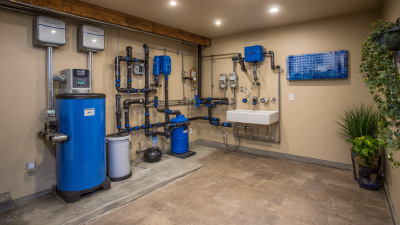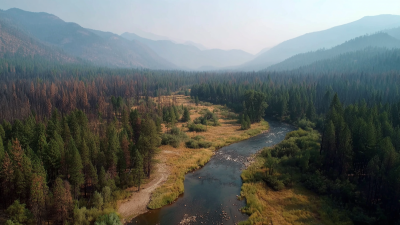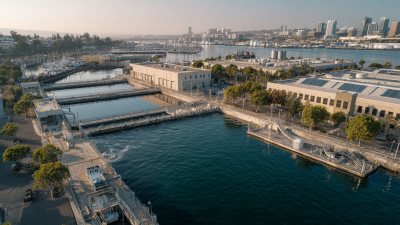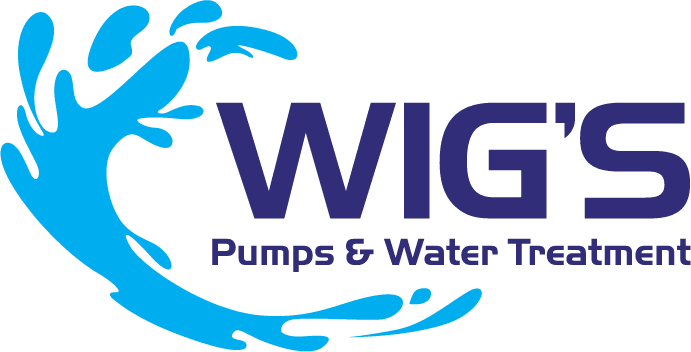Innovative Water System Solutions for Sustainable Urban Development
As urban populations continue to surge, the demand for effective water system solutions becomes increasingly critical in sustainable urban development. According to a 2021 report by the World Bank, over 1.5 billion people currently live in cities that experience severe water shortages, highlighting the urgent need for innovative approaches to manage this vital resource. Sustainable water system solutions not only aim to enhance the efficiency of urban water management but also to promote environmental stewardship, reduce waste, and ensure equitable access to clean water. Furthermore, the United Nations Environment Programme (UNEP) emphasizes that investing in sustainable water infrastructure could yield a return of $4 for every $1 invested by reducing the economic costs associated with water scarcity. This introduction sets the stage for exploring a range of cutting-edge strategies and technologies that can revolutionize urban water systems, ensuring they meet both current and future demands while fostering resilience against climate change.

Strategies for Implementing Smart Water Management Systems in Cities
Innovative smart water management systems are becoming essential for sustainable urban development as cities worldwide grapple with significant water resource challenges. The global smart water management market is projected to reach $43.7 billion by 2030, demonstrating a critical shift towards technology-driven solutions. These systems enhance resource allocation, enable efficient leak detection, and bolster urban resilience against climate change impacts. By leveraging advanced technologies such as artificial intelligence and online hydraulic modeling, cities can anticipate and mitigate water-related issues, creating a more sustainable and secure urban water ecosystem.
The integration of smart water management strategies not only addresses immediate resource challenges but also aligns with broader climate-adaptive urban planning principles. Cities like Guangzhou are setting ambitious targets for smart urban infrastructure, reflecting a commitment to innovation and sustainability. As these initiatives gain momentum, cities will transition from traditional risk management approaches to proactive strategies that focus on creating safe and resilient urban environments. By investing in smart water systems, urban planners can ensure that water management practices contribute significantly to the overall health and sustainability of urban landscapes.
Adopting Green Infrastructure for Enhanced Urban Water Resilience
The adoption of green infrastructure is essential for enhancing urban water resilience, particularly in the face of climate change challenges. Recent studies highlight the integration of social data with engineering solutions to develop resilient water infrastructure in coastal communities. By combining community insights with sophisticated flood modeling, cities can effectively implement green solutions that not only mitigate risks but also promote social equity. This collaborative approach is pivotal for building comprehensive strategies that address the unique vulnerabilities of marginalized populations.
In urban areas like Monterrey and Brussels, decision support models such as the Flood Resilience-based Urban Green Infrastructure Site Priority (FRUGISP) have gained traction. These models leverage GIS-based analysis to prioritize green infrastructure interventions, enabling cities to bolster flood resilience. Public-private partnerships are also emerging as a crucial factor in advancing these initiatives, effectively mobilizing resources across economic, environmental, and institutional domains. As cities increasingly confront the multifaceted impacts of climate change, prioritizing green infrastructure will be integral to creating sustainable urban water systems that support both resilience and long-term development goals.

Innovative Technologies for Water Recycling and Reuse in Urban Areas
Urban areas face increasing pressure on water resources due to rapid population growth and climate change, making innovative technologies for water recycling and reuse essential. Sustainable water management strategies must encompass a comprehensive approach that includes efficient supply, distribution, treatment, and drainage systems. Among the top trends reshaping the water sector is the integration of AI-powered operational intelligence, which enhances decision-making and optimizes resource utilization. This technological advancement supports the development of decentralized infrastructure, enabling urban centers to recover and repurpose wastewater effectively.
In regions grappling with water scarcity, such as the Middle East and North Africa, eco-innovative solutions for wastewater treatment and reuse have become vital. By treating wastewater properly, cities can alleviate the pressures on freshwater sources and promote sustainability. Moreover, initiatives like green municipal bonds are paving the way for urban resilience, allowing municipalities to fund sustainable infrastructure projects. As the global water recycling and reuse market continues to grow, innovative solutions stand at the forefront of ensuring that urban populations have reliable and sustainable access to water resources, addressing both current and future challenges.
Innovative Water Recycling and Reuse Technologies in Urban Areas
Community Engagement in Developing Sustainable Water Solutions
 Community engagement is essential in the development of sustainable water solutions in urban areas. When communities participate in the planning and implementation of water systems, they not only contribute valuable local knowledge but also increase the likelihood of success and acceptance of these initiatives.
Collaborative efforts can foster a sense of ownership among residents, leading to more effective maintenance and stewardship of water resources.
Community engagement is essential in the development of sustainable water solutions in urban areas. When communities participate in the planning and implementation of water systems, they not only contribute valuable local knowledge but also increase the likelihood of success and acceptance of these initiatives.
Collaborative efforts can foster a sense of ownership among residents, leading to more effective maintenance and stewardship of water resources.
Innovative water system solutions, such as rainwater harvesting, greywater recycling, and smart irrigation systems, can be tailored to meet the unique needs of each community. By involving residents in designing these systems, urban developers can ensure that the solutions resonate with local values and practices.
Educational workshops and public forums can serve as platforms for sharing knowledge and gathering input, ensuring that the voices of community members shape the future of urban water management.
This participatory approach not only enhances the sustainability of water solutions but also strengthens community bonds, creating a resilient framework for urban development.
Integrating Nature-Based Solutions for Urban Water Quality Improvement
Nature-based solutions (NbS) have emerged as a vital approach for improving urban water quality while fostering sustainable urban development. By integrating green infrastructure, such as green roofs, rain gardens, and permeable pavements, cities can effectively manage stormwater runoff and reduce pollutants entering water bodies. These solutions mimic natural processes, enhancing water filtration and creating habitats for urban biodiversity. Implementing NbS not only addresses water quality issues but also promotes social cohesion by providing green spaces that residents can enjoy.
Moreover, the integration of NbS into urban planning encourages resilience against climate change, particularly in areas prone to flooding and heatwaves. By enhancing the urban ecosystem, cities can better regulate stormwater, mitigate the urban heat island effect, and improve air quality. The benefits of these solutions extend beyond environmental improvements; they also contribute to the well-being of communities by providing recreational areas and promoting mental health. Thus, incorporating nature-based solutions represents a holistic strategy for elevating urban water quality and fostering a sustainable urban environment.
Innovative Water System Solutions for Sustainable Urban Development - Integrating Nature-Based Solutions for Urban Water Quality Improvement
| Solution Type | Description | Benefits | Implementation Cost ($) | Effectiveness (%) |
|---|---|---|---|---|
| Rain Gardens | Vegetated areas that collect and filter stormwater runoff. | Reduces flooding, improves water quality, enhances biodiversity. | 2,000 | 80 |
| Green Roofs | Roof surfaces covered with vegetation to absorb rainwater. | Reduces heat island effect, minimizes runoff, improves air quality. | 50,000 | 70 |
| Permeable Paving | Paving materials that allow water to infiltrate through surfaces. | Reduces runoff, replenishes groundwater, decreases pollution. | 30,000 | 75 |
| Constructed Wetlands | Engineered systems designed to mimic the functions of natural wetlands. | Effective for wastewater treatment, habitat creation, flood control. | 100,000 | 85 |
| Bioretention Cells | Shallow, vegetated areas designed to capture direct runoff. | Filters pollutants, reduces runoff volume, enhances aesthetics. | 15,000 | 78 |
Related Posts
-

Transform Your Life with the Ultimate Water System: Discover Healthier Hydration Today!
-

Innovative Water Treatment Systems for Sustainable Solutions in Your Home
-

Exploring Innovative Wildfire Water Solutions to Protect Our Communities and Environment
-

Understanding the Importance of a Reliable Water Testing System for Safe Drinking Water
-

Essential Guide to Understanding Water System Plumbing for Modern Homes
-

Unlocking the Future: How Water Reclamation Systems Can Revolutionize Urban Sustainability
